My tour to Canada’s extreme north east was interrupted by a stuck exhaust valve at the end of my first leg. It was trip (prepaid) threatening. With some very kind and generous help, and the lone of exactly the needed guide home – delivered, I was able to stay on track, and did finish the trip (44 total hours, 40 post valve work).
I had confidence in the engine, as it has always run like a top. 240 hours TTSO, not a problem. Suddenly, out of no where, a stuck valve just as I landed. I was not even sure, until I was on the ground, and confirmed rough running and extreme low EGT on that cylinder. After parking, a pull through confirmed it. After seeking recommendations for a quick fix, just to get me back home, nothing worked. It was really stuck.
The hone arrived the next morning, and I went to work. I removed all the forward cowls and dropped the entire exhaust, so as to access the exhaust ports. I noted that the thin exhaust gasket on that cylinder had blown, and was mostly missing, allowing exhaust gasses to escape between the cylinder port face, and exhaust flange. No damage to either. I had had loose nuts there, which I had previously tightened. I though no more of this at the time, but I do now!
I used the rope trick, and released the keepers and springs. I had to pound on the valve stem to get the valve into the cylinder. With that, I honed, and used the “go-no go” gauge, to confirm the honing was done as required. Once done, with some finger and tool art, I got the valve back in the guide, and its motion was a thing of beauty. As the exhaust was all off anyway, I similarly checked the other three cylinders. Their valves were perfect, no honing required.
Four new blow proof gaskets, and new rocker gaskets, and the end of a long day heard the engine purr again. An hour long test flight to confirm success, and return the tools, perfect. So I continued my original trip, and caught up to the rest of the group.
I was puzzled by the seemingly unrelated coincidence of the blown exhaust gasket being the cylinder with the stuck valve. I discussed this with the group the first night, and a retired Continental Engines engineer explained it to me: If the exhaust gasses are not carried well away from the cylinder as intended, that cylinder will get locally hotter than intended. As the guide is running hotter, it expands more, and allows more gunk to accumulate. Finally when I pulled the power off, and made a low power approach, the cylinder cooled again, and that was it for the guide to valve stem clearance. It all makes perfect sense.
So the lesson is that to keep the engine running properly, and cool, assure that the exhaust gaskets are totally effective. With the 13 hours of easterly flying time to prove out the quality of my repair, I had the confidence to take it out for some air to air with a friend. The result is my new avatar :D
Welcome to the club, Pilot DAR 
To “a person I know well” it happened in Africa during the Egyptian revolution where no mechanic “he” trusted was willing to travel. The valve was so stuck that you could lift the plane with it. It took “him” hours to free it by using loads of WD40 (“He” was lucky that this commonly available in Africa), it it with a piece of brass (half a day was spent looking for a suitable metal that was softer than the valve and had the right shape so it could be used to hit on the valve) and the rope in the cylinder and the propeller to push it back.
“He” couldn’t get a reamer and had to come up with an improvised technique which I believe is even better. “He” used a copper pipe which “he” flanged and loads of WD40 to scrape the valve guide off deposits. Copper is so soft that it will not scratch the guide and this technique ensures that no material is lost which is always the danger with the reamer. “He” managed to get it all clean and shiny using that technique.
The first day was spent fabricating a tool to remove the valve springs, that was by far the hardest part. “He” since then purchased a Valve Wizard and has performed the technique on all cylinders and keep doing it every year as a precaution. It is a Lycoming design problem. “He” also keeps using the copper pipe even though “he” now has the right reamer.
The fabricated tool from stainless steel
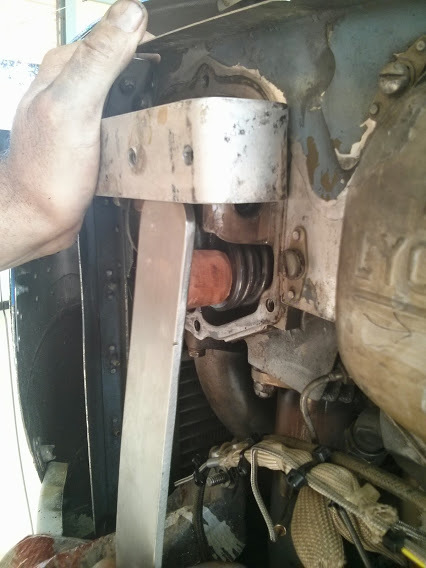
The “rope trick” looks spectacular on paper but it is actually not very difficult
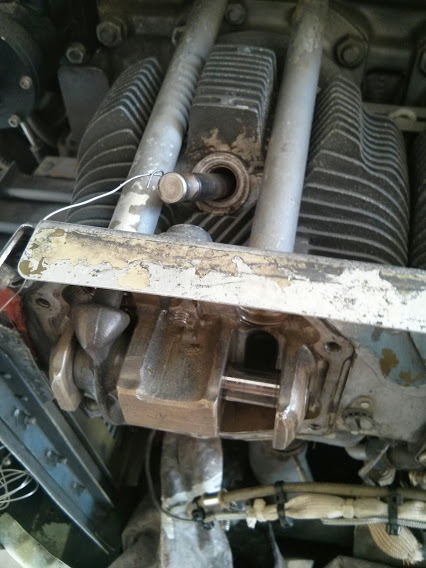
The valve guide with all the crud in it
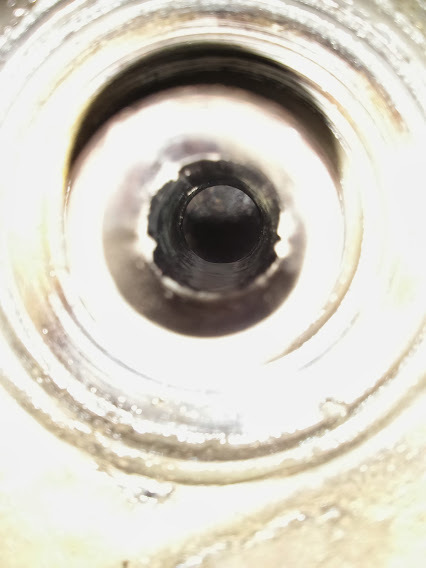
A flanged copper pipe assisted by masses of WD40 to scrape off the deposits
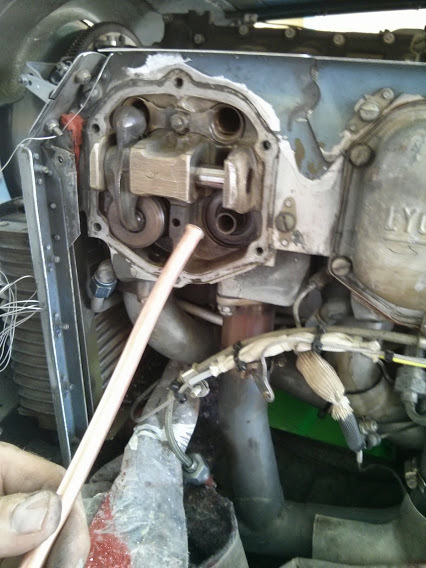
Nice and clean after the operation
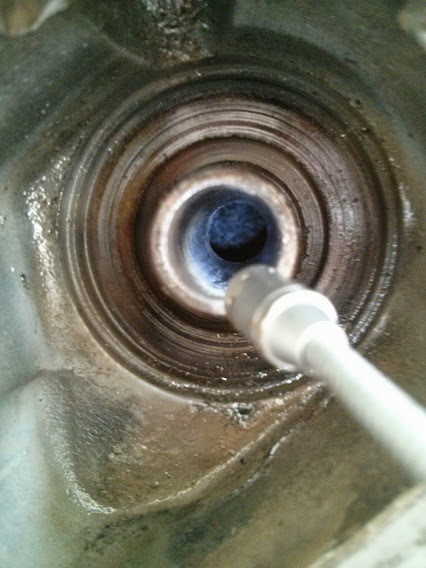
These little wedges hold the valve spring. Twice one of them went away and “he” was certain to never find it again but eventually “he” did. The springs are massive (two actually per valve) and they catapult everything miles away and you can easily lose a finger or two.
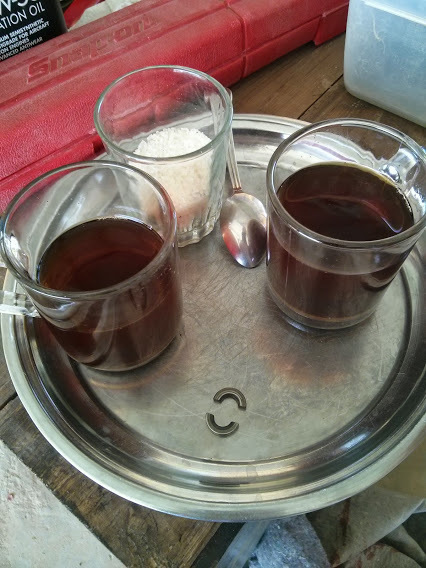
Where were you? I managed to lose a starter motor in Eureka (the most northerly accessible airfield in Canada), on a Sunday, in a temperature of -40°, and still be delayed by only three hours (luckily I had a spare).
I found the very far north of Canada amazingly friendly, helpful and full of human kindness.
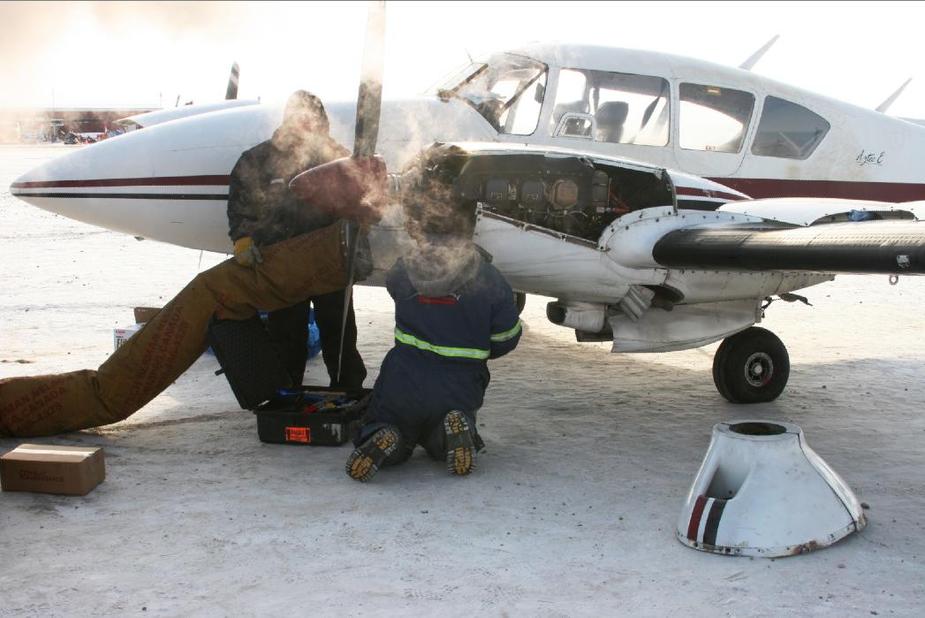
[pic added]
Great stories PD, Achima & Timothy! Intrresting that a leaking exhaust gasket led to the problem…so presumably no “morning sickness” clue…what about your “friend” Achima, were there any warning signs?
OP – were these chrome valve guides: they’re indicated by a letter C stamped on the face of the cylinder head. If I remember there is also an AD to check valves for ‘loseness’ using a clock gauge setup and if not within tolerance they should be replaced.
What a story…
I did some digging and found that in 1999, Lycoming changed their valve guide material to a high-chromium bronze, and apparently valve guide wear and sticking went away after that. The cylinders with that are marked with a “C”. I have these.
Edit: just seen jxk’s post. This alone seems like a good reason to put in the new cylinders, at TBO or even before…
just seen jxk’s post. This alone seems like a good reason to put in the new cylinders, at TBO or even before…
The “valve wobble test” SB applies to “C” cylinders as well. And “C” cylinders did not solve the valve sticking / wear issue, they only improved it a bit. The real cause is unknown but most signs point to insufficient oil flow through the rocker covers, meaning insufficient cooling of the valves. There is one rare Lycoming engine variant (I forgot the exact name) which has a different oil cooling design and which does not show this problem.
what about your “friend” Achima, were there any warning signs?
Well, I am a bit unsure about that. At the time, I was not an expert on Lycoming valves, now I think I really am so I can read the signs much better. I did notice for some time that the engine vibrated more at idle but I do not remember having seen a dead EGT right after startup (which is the sign of “morning sickness”, i.e. a cylinder not yet firing because the valve is stuck open).
What I find puzzling until today is that the issue never occurred on the aircraft in 2200h (900h on the engine) and a week after starting to use Camguard and a straight oil, it happened on two valves simultaneously. First “morning sickness” in Greece which was cured by hitting the valve with a piece of wood, then a briefly stuck valve during that next flight (change of underwear mandated) and then it was completely stuck after landing, as I said one could have suspended the aircraft on the stuck valve. I do not believe in coincidence here, I think the use of Camguard and/or the mineral oil has contributed to it. If a valve gets stuck open, you lose a lot more than one cylinder, you lose more than 50% of your engine power in my experience because the mixture escapes through the cylinder with the open valve. An experience not worth repeating.
Given that this is such a major design weakness in Lycomings, I would do the reaming every year, just as a precaution. I can do it in less than 30 minutes per cylinder now. If the valve gets stuck in the closed position, the damage will be huge (and potentially fatal). I am also 100% convinced that valve friction contributes to camshaft spalling so it’s a good thing to clean those guides regularly.
Intrresting that a leaking exhaust gasket led to the problem…
These exhaust nuts do get loose, that is a real annoyance with Lycomings. I check them every month or so. The original Lycoming nuts cost $20 a piece or so but from what I’ve seen, most shops use standard steel nuts which in my experience perform equally “well” and cost nothing. The Lycoming nuts don’t last very long due to the heat. I have a turbo so even a tiny exhaust leak becomes evident due to the backpressure. I pressurize the whole exhaust stack with a cabin pressurization tester every 2 years and then apply leak detection spray everywhere. I think that should be done with every aircraft. A lot of people have totally rotten exhaust stacks and don’t know about it…
And “C” cylinders did not solve the valve sticking / wear issue, they only improved it a bit
Googling suggests that it improves it to the point where it doesn’t matter at all. I have certainly never heard of anybody else with a TB20GT (year 2000 on) with the issue.
However I think the post year 2000 IO540 population may be very small. Most engines actually flying in private use are much older.
The “valve wobble test” SB applies to “C” cylinders as well.
SI 1485A says that “hi chrome” exhaust guide cylinders don’t need the 400h mandatory wobble test, only a recommended 1000h wobble test.
“Once guides made from the improved material are installed in all cylinders on the engine, it is no longer necessary to complete the mandatory 400 hour inspections specified in the latest revision of Service Bulletin No. 388.”
I don’t believe in the wobble test anyway, it’s not effective. You measure the play of the valve in the guide. If it is too much, the valve stem is worn. So far so good, that’s a fair assessment. When the wobble shows too little travel per the SB, then they conclude there is crud in the valve guide and it needs reaming. Now what if you have worn valve stems and crud in the guide and the travel is just within the limits? This test is inconclusive and totally unnecessary because removing the valve is not much more difficult. As I said, I can do it with reaming and putting everything back together in 30 minutes. The typical Part 145 does not know the “rope trick” and believes that in order to remove the valve, you have to remove the cylinder.